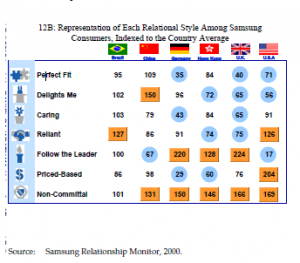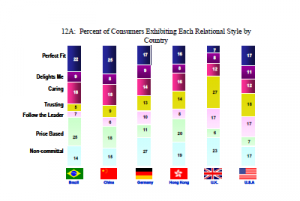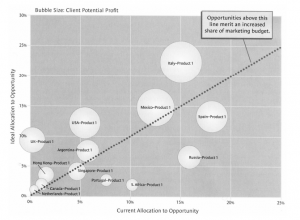Political Factors
Samsung operates mostly in stable regions where the political systems are stable. This allows it to develop a strong business strategy in a particular region for a sustainable period of time. However, in the current period, Samsung is faced with intense political instability in its home country as well in the US, due to home war with neighboring country and presidential elections respectively.
Economic Factors
The rising trend of globalization and the emerging markets in Asian regions have called Samsung to establish the markets in the Asian and other regions. However, since these regions are still emerging and the trend of the economy is unstable and volatile, it poses great threat to the continuous growth of Samsung in those markets for example, India. However, the strategy of Samsung to offer smart phone and technology to the developing regions offers it a suitable path to pursue in order to develop a strong market in the region and compete in terms of profits with Apple.
Social Factors
The social factors include the lifestyle, brand positioning, and niche marketing. Since smartphones and other technologies have become a part of consumer social factors, Samsung faces great pressure which calls for the customized product offering in each region. Since the socio-economic factors differ from one another, Samsung needs to develop strong customization strategy for each region in order to incorporate the social factors in it.
Technological Factors
Samsung can be considered as one of the most technologically advanced companies in the globe. Over the period of time, with the advancement in technology, Samsung has incorporated the technological expertise into its business strategy which has allowed it to give intense competition to Apple.
Legal Factors
The legal factors account for the breach of patent rights, copyrights and trademark. Recently, Samsung has been penalized in the US region due to the imitation of some of the legal designs of Apple products. This has affected the brand image of Samsung in the US market and also damaged its strong position and distinctive market image in the US. Hence the legal factors pose a great threat to the innovative and technologically strong business strategy, since the legal rights and patent authorization can cause great hurdle in pursuing or adopting certain technology.
Competitive Edge
Samsung has strong manufacturing and vertical integration that allow it in-house manufacturing, reducing the dependence on the external suppliers, which in the long term may imitate the technology. In addition, the company efficiently operates in different categories such as semiconductors, digital media, mobile phones, and telecommunication, allowing it to expand in the market through strong market penetration and product development strategy.
In addition to this, the company also has strong supply chain management and marketing strategy that makes it the top tier brand in the global market. The effective marketing tools and operational strategy make Samsung reach the top slot in the global market.
Alternative Generation
Alternative-1: In order to deal with the problem, the company should increase its market share in the European market. It is due to the weak presence of Samsung in that region that it has a substantial role in the global market.
Pros:
- This will allow Samsung to penetrate into the European region, making it tap the market value easily and capitalize the opportunity effectively.
- It will allow it to expand its product offering and pursue the market development strategy.
- This will make Samsung elevate its position in the global markets by incorporating more products and also enhancing the technology to meet the customer demand.
Cons:
- European market is a difficult market as most of the countries are loyal to their local brand, making it difficult for Samsung to create a position in such market.
- The European market operates totally differently from the US market, making the company to invest more into the product line to align with the customer demand, hence making the operation costlier.
- The government levies high taxes on the external players, making it difficult for Samsung to maintain its pricing strategy in the particular region. Also, the barriers to entry are very high.
Quantitative Analysis of the Alternative:
The current position in the UK market of Samsung according to the data stands at more towards following the leader based category and non-committal in the chart below, which is adverse for the organization and it needs to be changed. The 224 and 166 indexes suggest a high representation against the country norm.
A Graph of UK average consumer mind is also provided below:
When we accord towards the relational style of consumers in this market, then it can be taken that 27% of these consumers fall into the Trusting Stage, which analyzes that the consumers in the region will only buy from organizations which they can trust. However, the Follow the leader category of 224 indexes suggests a ratio of 124% more than the market norm and is believed by the consumers in that market. The 166 index shows a 66% more than the market norm, which means that more no. of consumers in the market take Samsung as uncommitted specifically towards the market.
For this matter, this category needs to be identified and should be tackled to earn more revenues for the organization.
Alternative: 2:- The Company should reduce its overspending from the less profitable regions and invest in the emerging markets such as China, India and Indonesia (Ghana).
Pros:
- This will allow the company to increase its brand visibility in the global markets, making it elevate its global position.
- This will allow company to increase its sales in the emerging region, since these regions have more growth and consumption along with the low government entry barriers and regulations, making it easier for Samsung to lay down its strategy effectively.
- China and India are cheap and emerging religions. The company has the opportunity to enter these markets with a more focused strategy, leading to increased product development and market development that may ultimately add to the global strategy of the company.
Cons:
- The company may face strong threat of intellectual property rights.
- In addition, Samsung may not be able to offer the most enhanced technologies into these regions due to poor infrastructure.
- This may make the company shift its pricing strategy, or may create a brand dilution in the mind of the customer on the global level.
Quantitative Analysis of the Alternative:
Below table shows the M-Net Program used to allocate the funds for the international Globalization for Samsung of $1 Billion Dollar marketing campaign throughout the year:
According to the graph presented above by M-Net Software, it can be widely seen that the marketing budget for India and Chinese economies are not available since the markets are new and the company has not started to market in these areas.
Of all the 100% of this budget, it is required to keep at least 10-12% for marketing for these emerging markets, so that Samsung can utilize the best profits available during that period.
Decision Criteria
| Factor | Alternative:1 | Alternative:2 |
| Competitive edge | 1.5 | 2 |
| Global Presence | 2 | 2 |
| Market Penetration | 1 | 2 |
| Sales | 1.5 | 2 |
| Competitive Edge | 1 | 2 |
| Brand Image | 2 | 2 |
| Total | 9 | 12 |
Recommendation
By analyzing the overall situation and alternatives developed, it is recommended that the company should opt for the second alternative of increasing in the emerging markets. It is due to the fact that these markets have started showing aggressive growth trends with high economic activity and increase in the middle class ratio which has led to more consumption (Bagla, 2012).
In addition to this, such regions ( India and Ghana) have strong labor supply and cheap labor rates along with strong hands on technology, allowing Samsung to integrate the resources and consolidate the supply chain, thus making it reduce the cost of overall operations and gain more profits (Frost, 2000).
Apart from this, entering into the emerging markets may also allow the company to extent its product portfolio to low cost, allowing it to utilize the resources globally through the global chain. Lastly, India has strong technological support and cheap labor, therefore, Samsung needs the pro hand in technology in order to keep itself competitive in the market, since imitating has become easier and maintaining the value proposition difficult. Hence setting a strong game in technology will allow Samsung to elevate its position globally which will lead to the development of global brand image and high brand recall (Jullens, 2013).
IMPLEMENTATION
Short Term Plan (0-1 Year)
Under the short term plan, the company will initiate to launch mid-ranged and high ranged smart phones with advanced features and customized applications for the Indian market, in order to attract the customers. In addition to this, the company will initiate the digital media strategy in the Indian market by incorporating different media tools and devices such as technological chips and smart televisions at low pricing compared to others.
Long term plan (0 – 5 years)
Under the long term strategy, the company will extend its offering in communication such as smart phones and will launch low tier feature phone, in order to cater the low tier market of India. In addition, it will also increase its market penetration by increasing the number of distribution stores in different regions of India such as UP, Delhi, Calcutta and Mumbai...............
This is just a sample partical work. Please place the order on the website to get your own originally done case solution.














